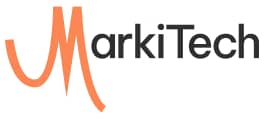How does a traditional sales process work? The first step begins when a customer learns about the product. This can be through any medium – a sales person, an advertisement or even word of mouth. Next is when the customer understands the benefit the product gives. Third is the differentiation stage, where a consumer can tell one brand from the other. Lastly, after comparing all options, is the final purchase.
Now lets take a look at social media. Social media is a powerful tool used by organizations to understand their audience, engage with them, answer their concerns and build a stronger brand image. Compare the traditional sales process to social media’s functions and you will see a considerable overlap. Social media can impact sales by interacting with a consumer at different consumer touch points, or said another way, different stages of a customer’s buying journey.
Given the increasing overlap of sales and social media, a question that marketers have asked is whether social media has taken over the role of sales personnel, or if it’s simply aiding them in the sales process. Many would agree that traditional sales practices like cold calling have become outdated. Reports by Harvard Business Review and Sirius Decisions point out that 92% of consumers contacted do not respond to calls or spam emails. Sales personnel who have been involved in such practices might be struggling to maintain their numbers.
Compared to the past, today’s consumer is considerably more proactive. Rather than waiting to be approached, the consumer will research and learn about a product independently. As more and more consumers go online to do their market research, organizations will need to develop techniques to pull potential consumers to their product – this is where social media marketing comes into play. An interesting report “Impact of Social Media on Sales Quota,” establishes this connection statistically. According to the report, 72.6% of sales people who used social media for their sales process were more successful than those who did not.
According to Colleen Francis, a Sales Specialist, sales personnel using social media have sales from between $30,000 to $250,000 annually. What is key in determining the extent to which social media will boost sales is the type and channel businesses choose. Colleen explains this through an example of a B2B firm wanting to increase sales. For a B2B firm, the best thing to do is to use Twitter to engage its audience and use LinkedIn to research employees making the buying decision for the organization. The reason for this choice of social media is simple. Twitter is the most common social media platform for college-educated adults under the age of 50. This matches the demographic of company employees typically engaged in making buying decisions of behalf of their organization. LinkedIn again, is a common social media forum for company employees. It contains details about professionals and can be instrumental in developing targeted strategies to approach employees involved in making company buying decisions.
Another concern marketers have is how using social media more and more might mean spending less and less time in the field generating “real” sales. According to a report by Hubspot, 50.1% of sales people report spending less than 5-10% time on social media. This statistic is useful in pointing out how dedicating even a small chunk of time on social media can yield high returns.
While social media is a great tool for increasing sales, traditional marketers are correct in pointing out that social media might not always be the main driver. Using the right medium is another element that needs to be considered and adjusted as the overall marketing mix changes. For example, research by Pew Research Centre revealed that (as of January 2014), 89% of young adults (18-29 years of age) used social media. If one’s target audience lies in this age bracket, your social media strategy is likely to have a high ROI. However, the same cannot be said for an audience of over 65 years where social media usage plummets down to 49%. Making sure you are engaging your audience with the right content at the right time needs to be taken into account.
Using an effective social media strategy can be very useful for sales personnel in boosting sales volume. Sales personnel and organizations need to start using this powerful medium to bolster their numbers along with many other sales techniques. Complimenting your social media strategy with sales and other marketing activities is the key to ensure that you are able to attain your desired results.
I hope I am able to convince that social media, digital and online marketing is an extremely important tool to boast sales.
By utilizing a digital marketing consulting firm for B2B marketers, such as MarkiTech, it is now possible to see the direct link between social posting and lead generation. We offer retainer and commission based sales and marketing for B2B segment especially focused on technology products and services.
MarkiTech can help, as partners, commercialize your technology products and services with deep focus on Digital Marketing and Mobile space as no one knows these two high growth areas as much as we do.


